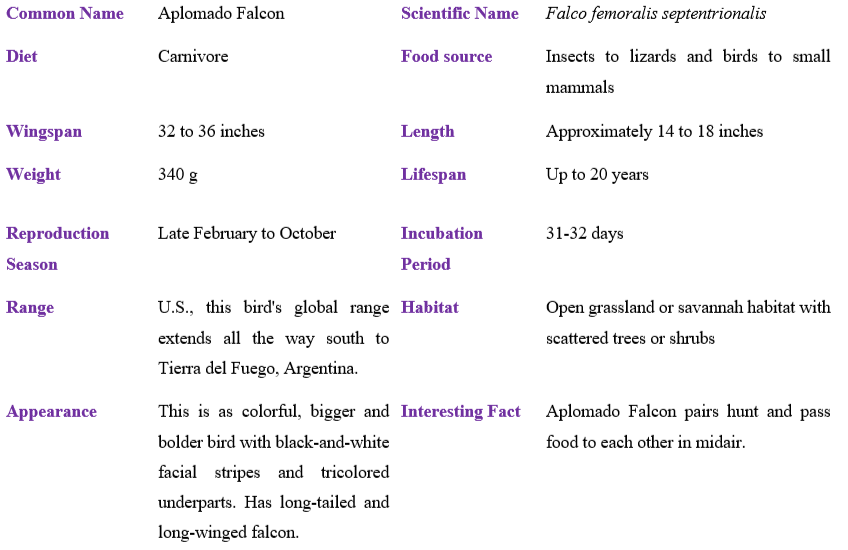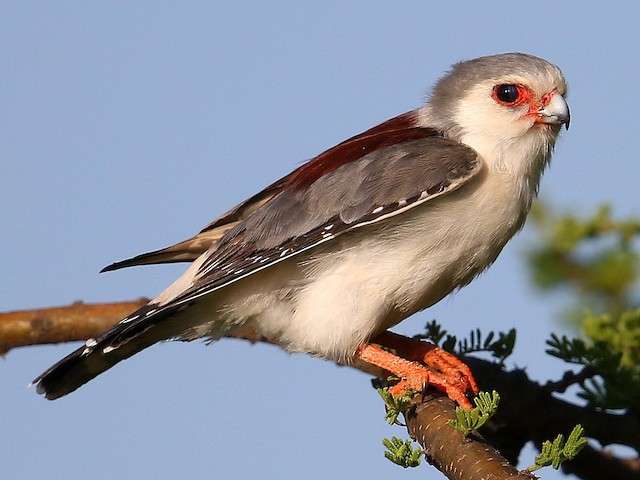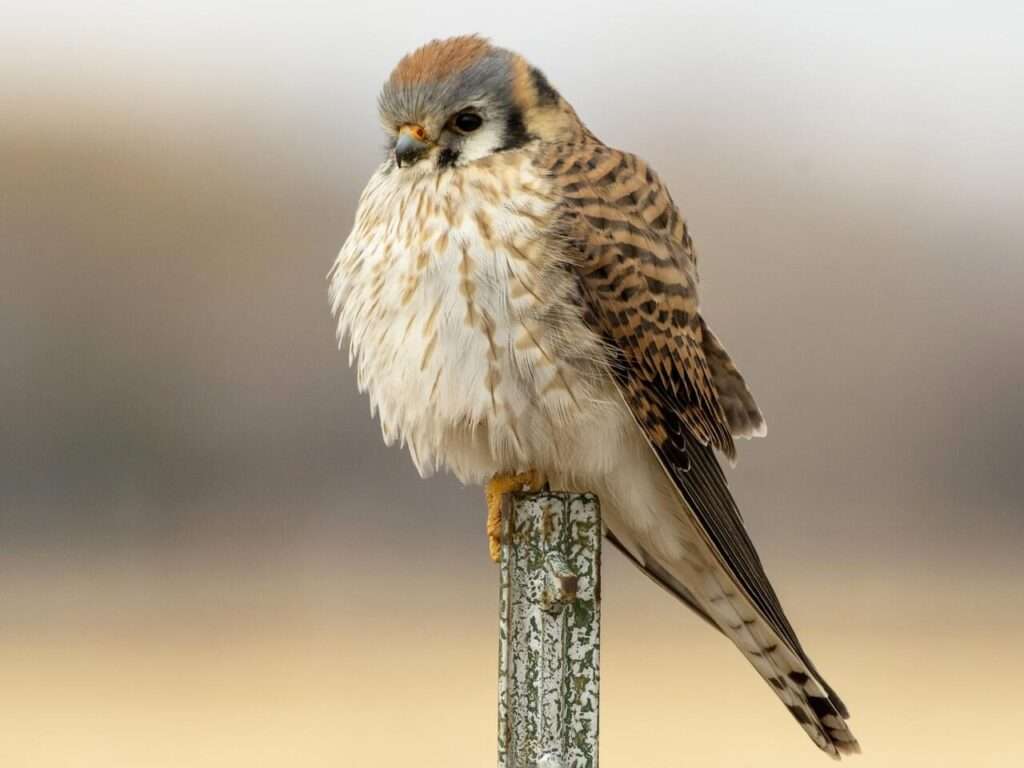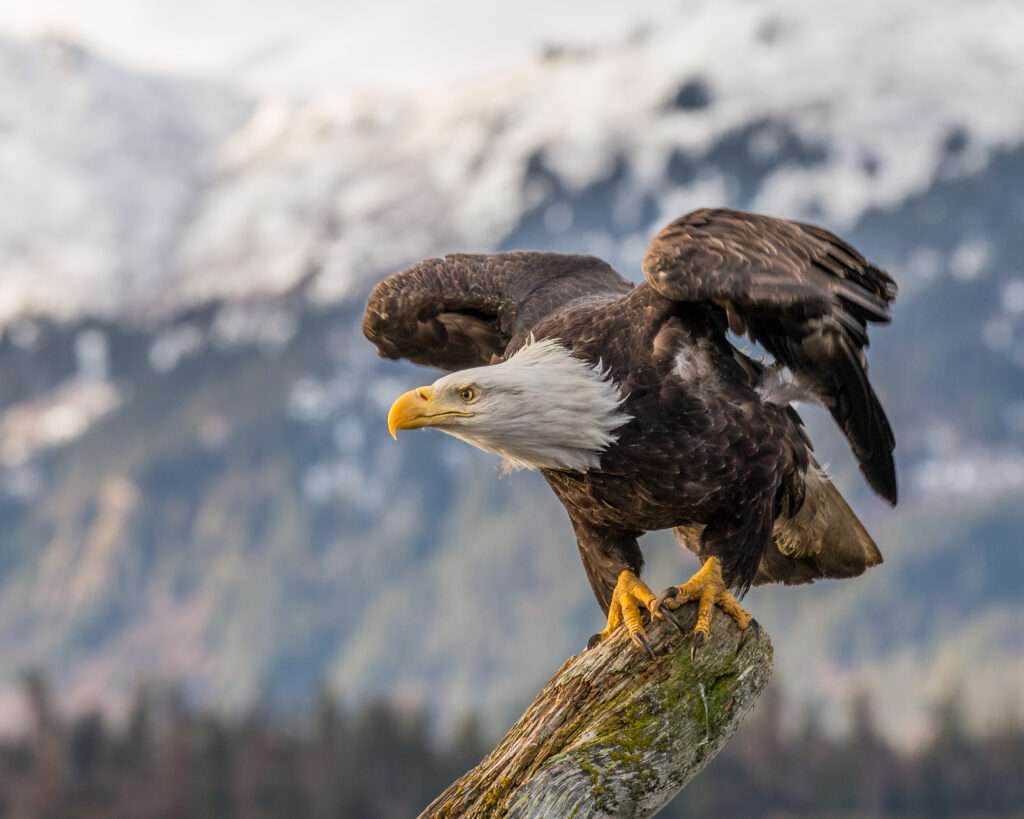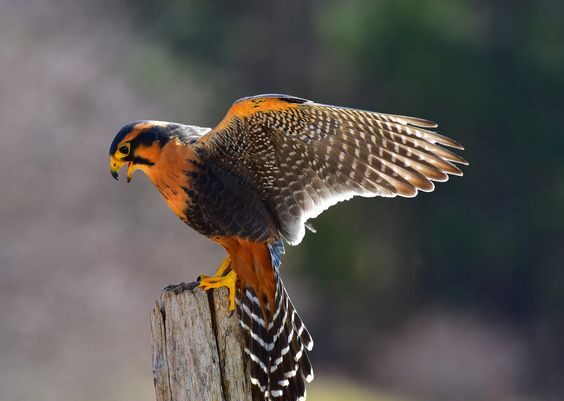
Description
Life span: Up to 12 years
The Aplomado Falcon has underparts that are tricolored and has as much coloration as an American Kestrel. This falcon with large wings and a long tail stalks small mammals and reptiles on foot while catching birds and insects in midair. The aplomado falcon has a long tail and a broad wing span. Adult falcons have dark blue-grey upperparts with a white throat and eyestripe, which contrast dramatically with the classic falcon mustache. The lower breast has black patches that meet in the middle on either side, and the abdomen and thighs are light cinnamon underneath the black areas. The upper breast continues the white of the throat. The tail has thin white or grey streaks along its dark tint.
Native Region/Habitat
The Aplomado Falcon is currently endangered in the United States and is being reintroduced in south Texas, where it was once plentiful in the dry grasslands of the southwestern United States. Although this bird is uncommon in the United States, it has a range that reaches as far south as Tierra del Fuego, Argentina.
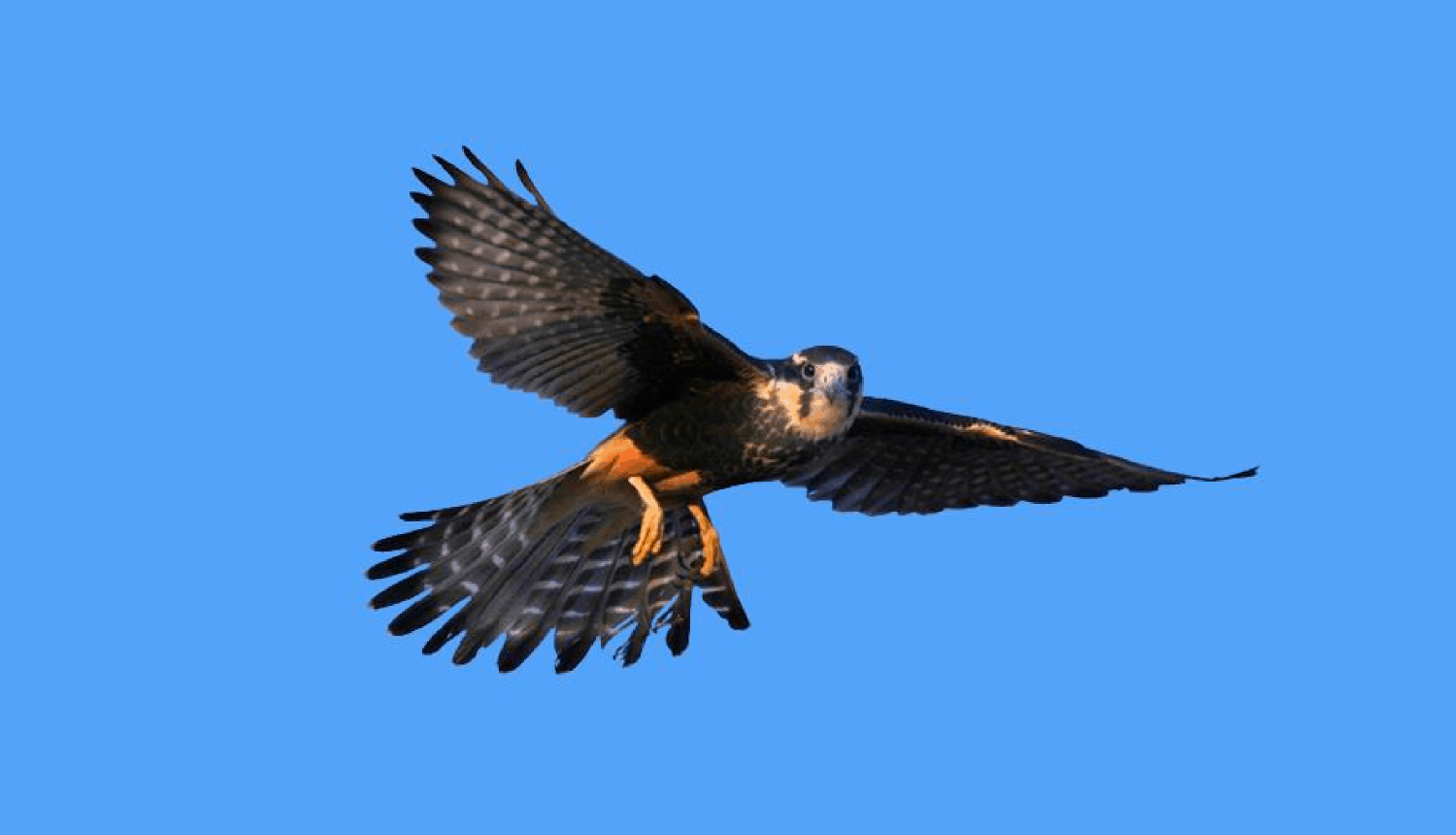
Behavior
Aplomado Falcons can outrun Mourning and White-winged Doves with ease thanks to their swift and powerful flight. These falcons usually pursue prey on foot and are capable of running on the ground. When roosting at night, they like to sit on the interior branches of trees. When courtship is in progress, males and females travel from perch to perch together and take to the air, either soaring together or chasing one other at top speed. All year long, pairs remain together and frequently perch close to one another. Additionally, hunting pairs will flush their target while the other snags it. Instead of making their own nests, Aplomado Falcons use stick nests that other raptors, crows, jays, or magpies have abandoned.
As a pet/In captivity
Falcons of the aplomado species are not typically friendly animals. One might discover a falcon that tolerates and even appreciates being touched depending on the species and the particular bird, but don’t hold your breath. Whether they are wild or domesticated falcons, they despise us and tend to stay away from us. They are inappropriate as pets. In most places, they can only be used for falconry once the required licenses have been obtained. There would be numerous challenges even if it were permitted to have a pet falcon because so few falcons have been reared in captivity. It would be challenging to train falcons as pets to live in a household setting. They demand specific housing, a lot of room, and other things that the majority of pet owners could not provide.
Table
